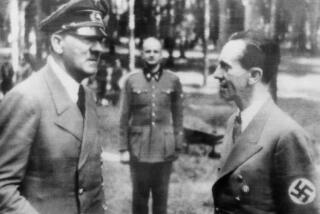You Might Be Infected -- With an Urban Legend
- Share via
Soft bubblegum has a secret ingredient that keeps it chewy: spider eggs.
Not really. But when I was a kid, that was the word on the street. This is a classic example of an urban legend. After a while, we stopped believing it, but we kept hearing it from other kids.
What distinguishes urban legends from garden-variety rumors is their staying power. Rumors come and go every day, but urban legends keep circulating.
Like this one: The child actor who played Mikey in the Life cereal commercials died after ingesting a lethal combination that exploded in his stomach: Coca-Cola and Pop Rocks, the effervescent candy that has enjoyed cyclical success over the years. Thanks to its pervasive and persistent spread, this one is a legendary urban legend; today, it practically has a cult following on the Internet.
How do these rumors survive and continue to spread, especially after individuals eventually realize they are bunk?
Social scientists call the process a “micro-macro disconnect.” At the micro level -- the individual level -- we hear a rumor, we believe it for a while, spread it a little during that time, but then eventually we come to accept that it is false. But at the macro level -- the societal level -- the rumor just keeps on spreading. This seems paradoxical, given that society is, after all, a collection of individuals. But in this sense, a spreading rumor is a lot like an epidemic disease.
Think of it this way: If someone has heard a rumor and believes it, she is “infected” by it. If she tells her friends, she is “contagious.” Sooner or later, wisdom or common sense takes hold, and like a child who recovers from chickenpox, she is “immune.”
This is more than just a cute analogy. Computer models of a disease can be adapted, with remarkably few modifications, to study the paradox of persistent rumors. My work in this area suggests an explanation of the urban legend puzzle.
Age is a key -- and not just because children are more credulous than adults. After all, there are urban legends among adults, too (like the one about the shopper who is cheated when buying a cookie recipe at a department store and gets revenge by spreading the recipe via e-mail).
Age comes into play because, over time, there are always new people entering a “group” through aging. For example, every fall there is a new batch of third-graders worried about Pop Rocks. Or, every day, there is a new cohort of uninitiated and trusting people getting an e-mail account for the first time. Whatever their biological age, these e-mail “newbies” are uninitiated and more likely to place trust in the new medium.
In my models, the most tenacious rumors achieve an age equilibrium, which means that the rumor believers belong to a well-defined age range, be they children or adults. As these people age, or gain more experience, they cease to believe the rumor but are replaced, through aging, by a new crop of believers (and rumor-spreaders).
Medical science would like to find a vaccine for the common cold, but since the virus changes so often it’s a tough job. Something similar is true with urban legends, which, like the common cold virus, are mutable. And like the common cold, they will be with us for some time to come.
Medical science’s approach to the problem of disease is vaccination, making people immune before they experience the disease. With urban legends, most people become immune the old-fashioned way: through experience.
Andrew Noymer is a graduate student in sociology at UC Berkeley.
More to Read
Eat your way across L.A.
Get our weekly Tasting Notes newsletter for reviews, news and more.
You may occasionally receive promotional content from the Los Angeles Times.







